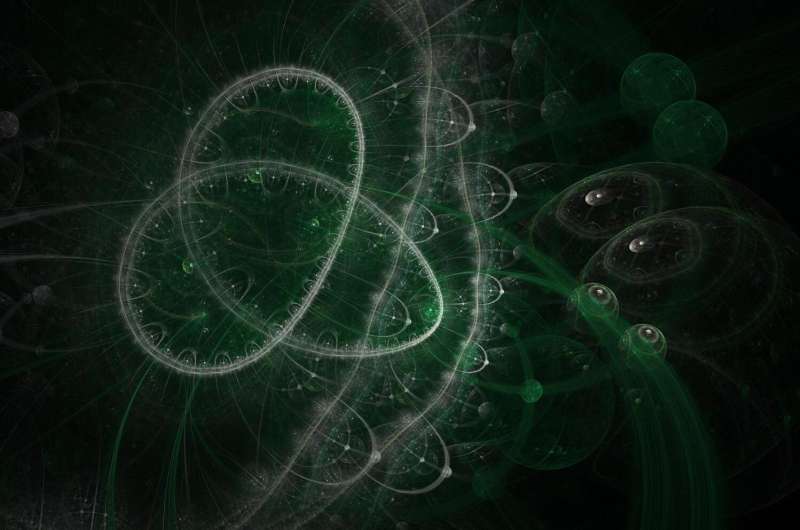New star described in a model combining relativity and quantum mechanics

A new kind of star is reported in a study by SISSA postdoctoral researcher Raúl Carballo-Rubio. In a paper recently published in Physical Review Letters, Carballo-Rubio describes a novel mathematical model combining general relativity with the repulsive effect of quantum vacuum polarization. The result is a description of an ultra-compact configuration of stars that scientists previously believed did not exist in equilibrium.
"As a consequence of the attractive and repulsive forces at play, a massive star can either become a neutron star, or turn into a black hole" says Carballo-Rubio. In neutron stars, stellar equilibrium is the result of the balance between gravity, an attractive force, and a quantum mechanical repulsive force called degeneracy pressure. "But if the star's mass becomes higher than a certain threshold, about three times the solar mass, the equilibrium would be broken and the star collapses due to the overwhelming pull of the gravitational force."
In the study, Carballo-Rubio investigated the possibility that additional quantum mechanical forces expected to be present in nature permit new equilibrium configurations for stars above this threshold. The additional force is a manifestation of the quantum vacuum polarization effect, which is a robust consequence of mixing gravity and quantum mechanics in a semiclassical framework. "The novelty in this analysis is that, for the first time, all these ingredients have been assembled in a fully consistent model. Moreover, it has been shown that there exist new stellar configurations, and that these can be described in a surprisingly simple manner."
There are still several important issues that remain to be studied, including the observational applications of these results. "It is not clear yet whether these configurations can be dynamically realized in astrophysical scenarios, or how long would they last if this is the case." From an observational perspective, these "semiclassical relativistic stars" would be very similar to black holes. However, even minute differences would be perceptible in the next generation of gravitational wave observatories: "If there are very dense and ultracompact stars in the Universe, similar to black holes but with no horizons, it should be possible to detect them in the next decades."
More information: Raúl Carballo-Rubio, Stellar Equilibrium in Semiclassical Gravity, Physical Review Letters (2018). DOI: 10.1103/PhysRevLett.120.061102
Journal information: Physical Review Letters
Provided by International School of Advanced Studies (SISSA)




















